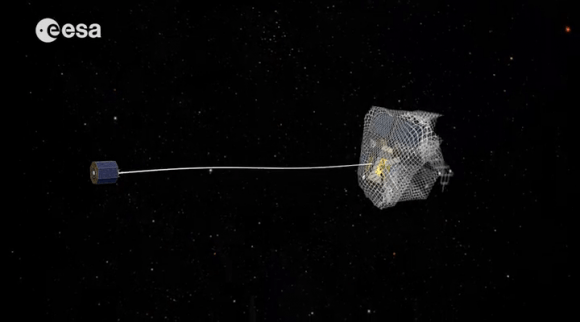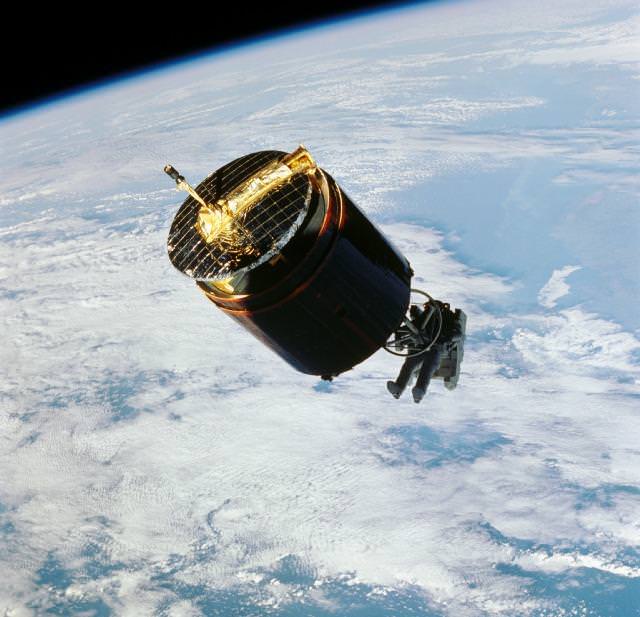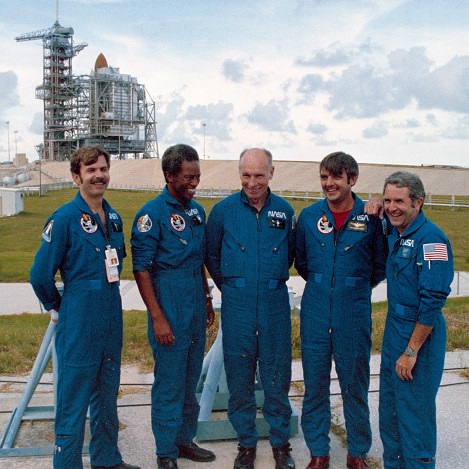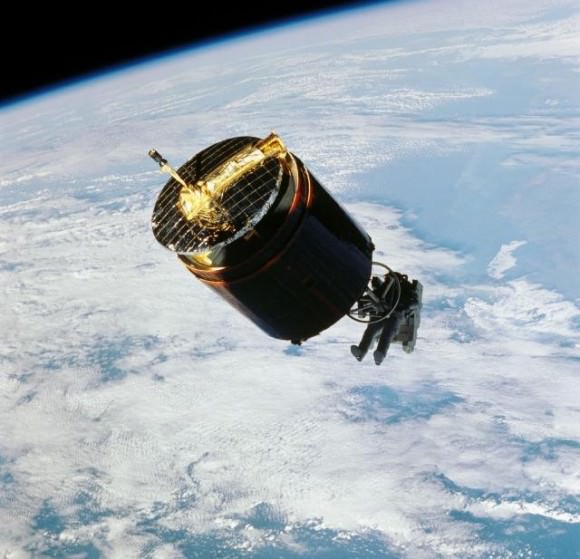I’ll admit it: I’m too young to remember 1984. I wish I did, however, because it was a banner year for the Manned Maneuvering Unit. NASA astronaut Dale Gardner, for example, used this jet backpack to retrieve malfunctioning satellites, as you can see above. (FYI, Gardner died Wednesday (Feb. 19) of a brain aneurysm at the age of 65.)
After three shuttle flights, however, NASA discontinued use of the backpack in space for several reasons — most famously, safety considerations following the shuttle Challenger explosion of 1986. But thirty years on, the problem of dead satellites is growing. There are now thousands of pieces whipping around our planet, occasionally causing collisions and generally causing headaches for people wanting to launch stuff into orbit safely.
Space agencies such as NASA and the European Space Agency have been working hard on reducing debris during launches, but there’s still stuff from decades before. And when a satellite goes dead, if it’s in the wrong orbit it could be circling up there for decades before burning up. How do you fix that?
Robotics has come a long way in 30 years, so space agencies are looking to use those instead to pick up derelict satellites since that would pose far less danger to astronauts. One example is the e.DeOrbit mission recently talked about by ESA, which would pick up debris in polar orbits of altitudes between 800 and 1,000 kilometers (about 500 to 620 miles).

The mission would use autonomous control and image sensors to get up close to the drifting satellite, and then capture it in some way. Several ideas are being considered, ESA added. A big enough net could easily nab the satellite, or perhaps one could clamp on using tentacles or grab it with a harpoon or robotic arm. Here’s a 2013 proposal with more information on e.DeOrbit. ESA noted there is a symposium coming up May 6 to discuss this in more detail.
e.DeOrbit is one of just several proposals to pick satellites up. A Swiss idea called CleanSpace One appears to use a sort of pincer claw to grab satellites for retrieval. The Phoenix program (proposed by Defense Advanced Research Projects Agency) would take useable parts off of broken satellites for use in new satellites, and in past years DARPA had some ideas to remove satellites from orbit as well. Another option is satellite refueling to make these machines useable again, a possibility that NASA, Canada and many others are taking seriously.
What do you think is the best solution? Leave your thoughts in the comments.





